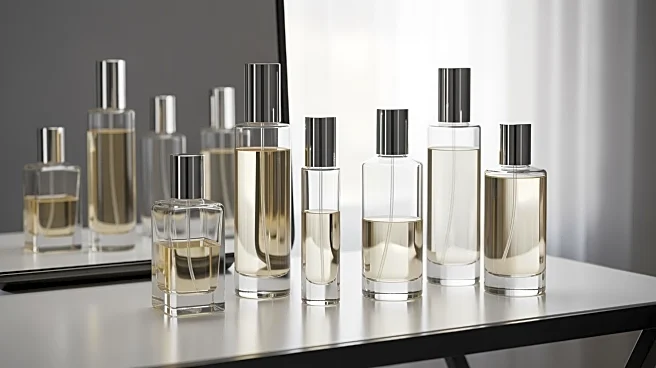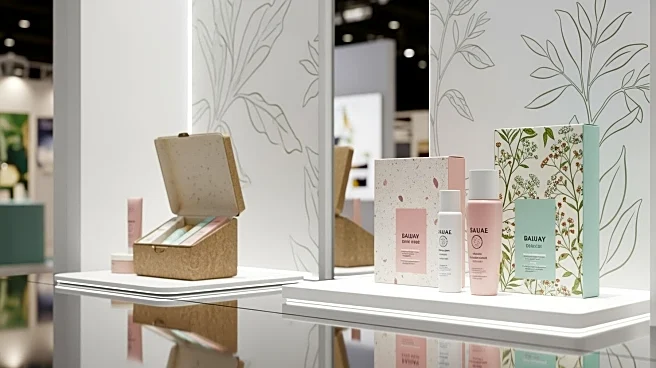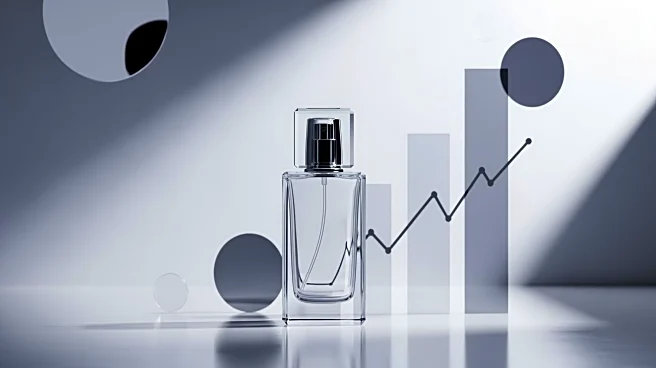What's Happening?
Refillable packaging is gaining traction in the beauty industry as brands seek to enhance sustainability and consumer engagement. This shift is evident across various product lines, from high-end perfumes
to everyday skincare items. The move towards refillable packaging is driven by the need to reduce waste and offer consumers a more sustainable option. A recent survey indicates that 59% of women have purchased refillable beauty products in the past year, showing a growing acceptance of this trend. Brands like La Bouche Rouge, L'Oréal, and Kjaer Weis are leading the charge by offering durable, aesthetically pleasing, and convenient refillable options. These companies are not only focusing on sustainability but also on maintaining the luxury and convenience that consumers expect from beauty products.
Why It's Important?
The adoption of refillable packaging in the beauty industry represents a significant shift towards sustainability, addressing the growing consumer demand for environmentally friendly products. This trend has the potential to reduce the environmental impact of beauty packaging, which often ends up in landfills due to its complex materials. By investing in refillable solutions, beauty brands can enhance their brand loyalty and appeal to eco-conscious consumers. This shift also aligns with broader global efforts to reduce plastic waste and promote sustainable consumption. As more brands adopt refillable packaging, it could lead to industry-wide changes, encouraging other sectors to follow suit in prioritizing sustainability.
What's Next?
As refillable packaging becomes more mainstream, beauty brands are likely to continue innovating to improve the convenience and appeal of these products. Companies may invest in developing new materials and designs that further enhance the durability and aesthetic value of refillable packaging. Additionally, there may be increased collaboration between brands and sustainability organizations to establish industry standards and best practices for refillable packaging. Consumer education will also play a crucial role in promoting the benefits of refillable products and encouraging widespread adoption.
Beyond the Headlines
The shift towards refillable packaging in the beauty industry could have broader implications for consumer behavior and environmental policy. As consumers become more accustomed to refillable options, there may be increased pressure on other industries to adopt similar practices. This could lead to a cultural shift towards more sustainable consumption patterns and influence regulatory policies aimed at reducing plastic waste. Furthermore, the success of refillable packaging in the beauty industry could inspire innovation in other sectors, such as food and beverage, where packaging waste is also a significant concern.











